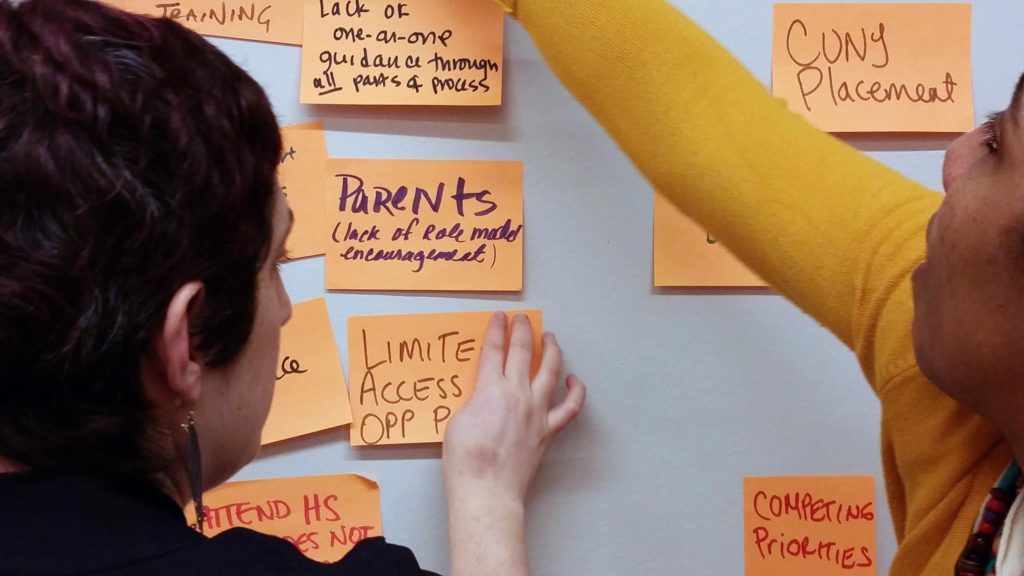
What are the barriers that keep some New Yorkers from attending and completing college? And how can we break those barriers down?
That’s the focus of #DegreesNYC, an exciting new effort led by our Options Center in partnership with Young Invincibles and GraduateNYC.
The numbers are sobering. City-wide, 57% of white adults have a bachelor’s degree—well over twice the rate of people of color. And college graduation rates for low-income youth lag way behind their upper income peers.
“Cities like Chicago and Los Angeles have collective action campaigns that are cradle-to-college, and they have city-wide goals,” Judith Lorimer, co-director of Goddard Riverside’s Options Center, told a room full of educators and advocates in Brooklyn on Wednesday night.
The group has organized meetings in each of the five boroughs to discuss the barriers that hold low-income youth and young people of color back. This initial series of gatherings will culminate in a city-wide community hearing in May, where participants will review the initial findings and propose solutions.
In the fall, #DegreesNYC will hold a summit to weigh those solutions and create a plan to close the gap.
At the Brooklyn meeting, participants identified obstacles to college enrollment and success. They wrote them on sticky notes, put them on the wall, and organized them into categories. Then they split into small groups to discuss each category.
Some 25 attendees took part enthusiastically, filling the room with conversation.
“It was great,” said Raedel Wallace afterward. Wallace, a project coordinator at City University of New York, said conversations about these issues usually take place “in siloes.”
Talking with other organizations “gives you a different perspective on the issues people are grappling with,” she added. “Having a common language and a common goal helps.”
Options Center has been working on these issues for decades; it has helped 7,000 youth and adults go to college. It provides everything from test prep support, to campus visits, to phone counseling and transportation money once a student has enrolled in college. More than three-quarters of the students Options serves come from low-income households. More than two-thirds are the first i